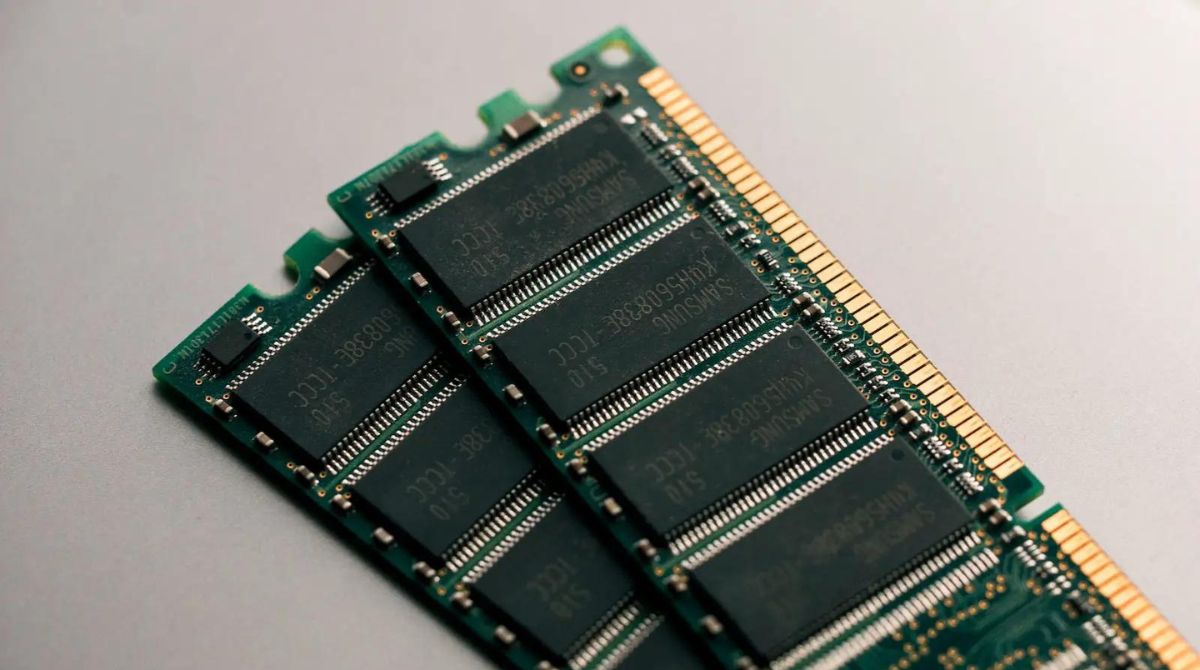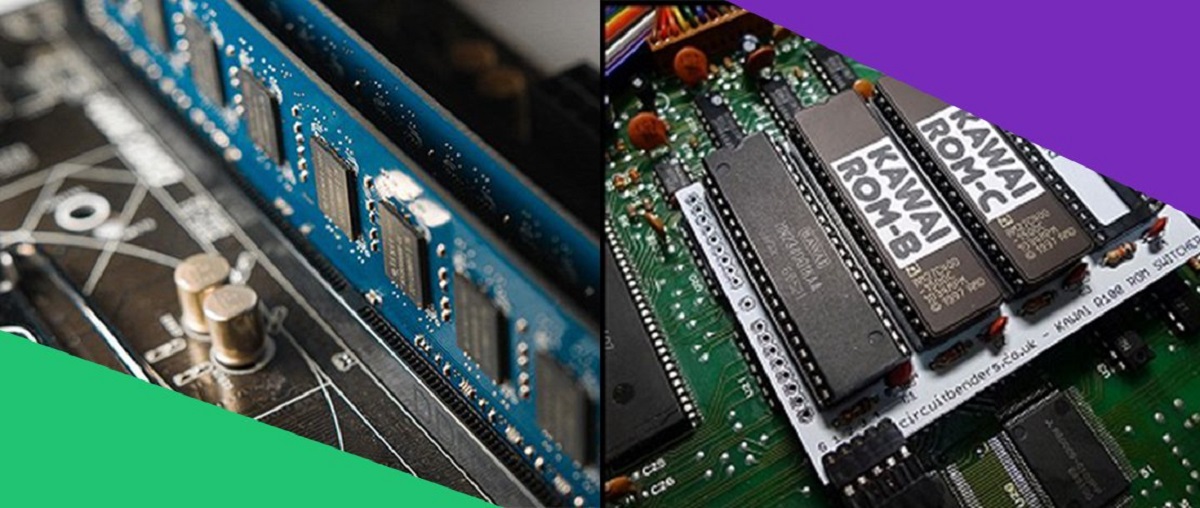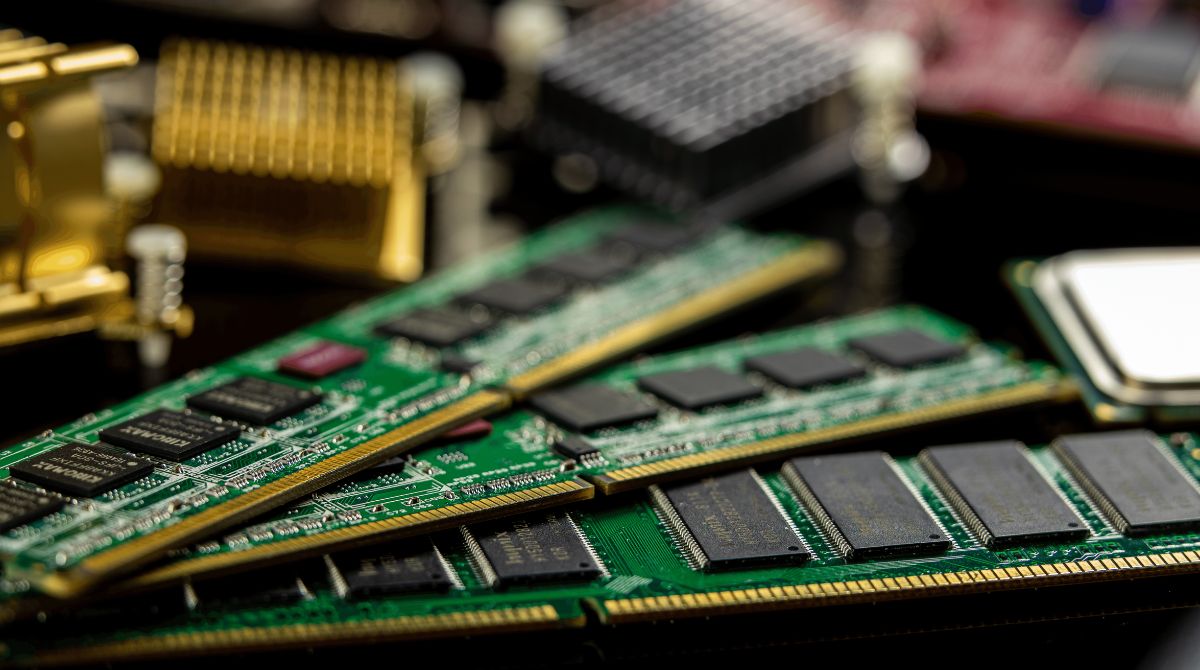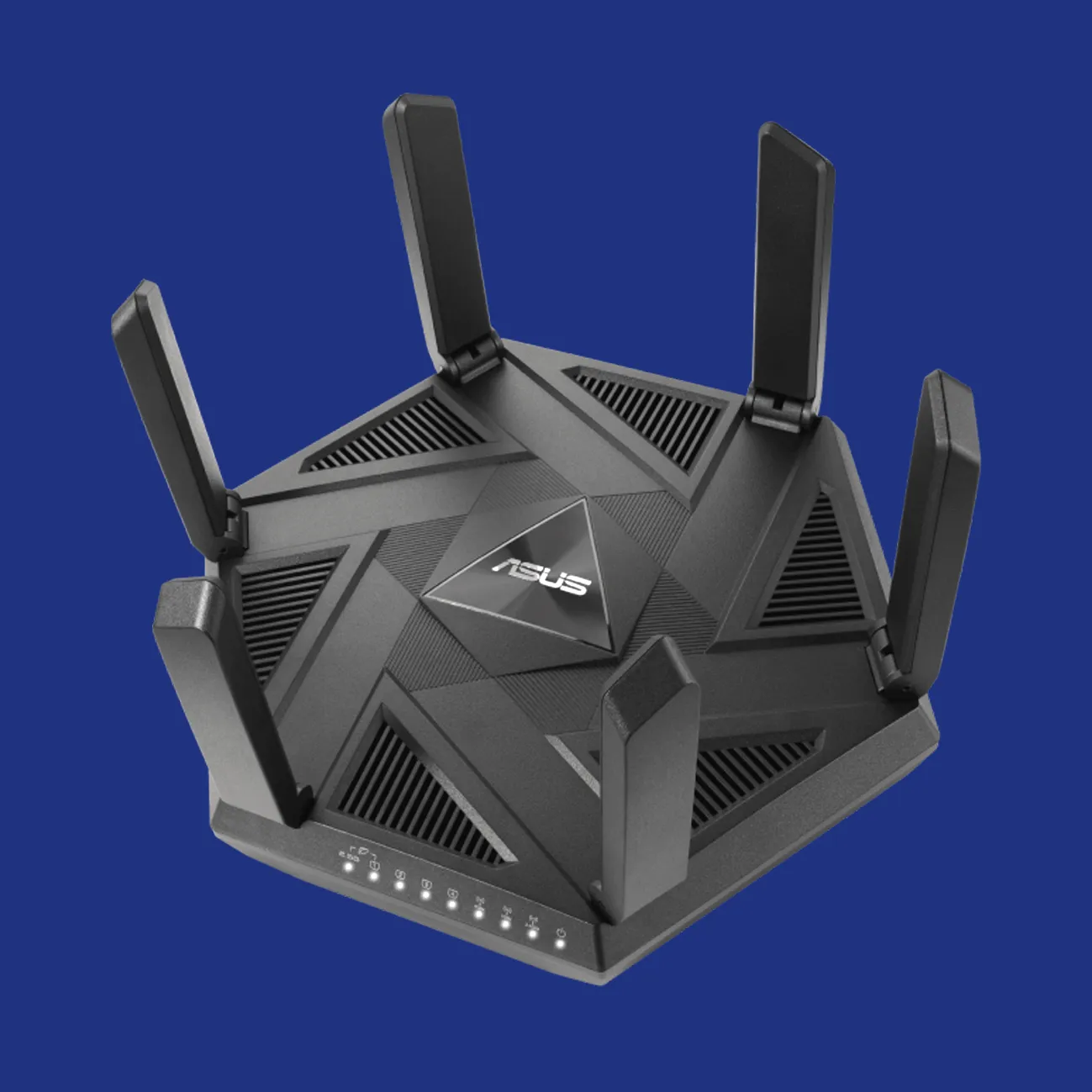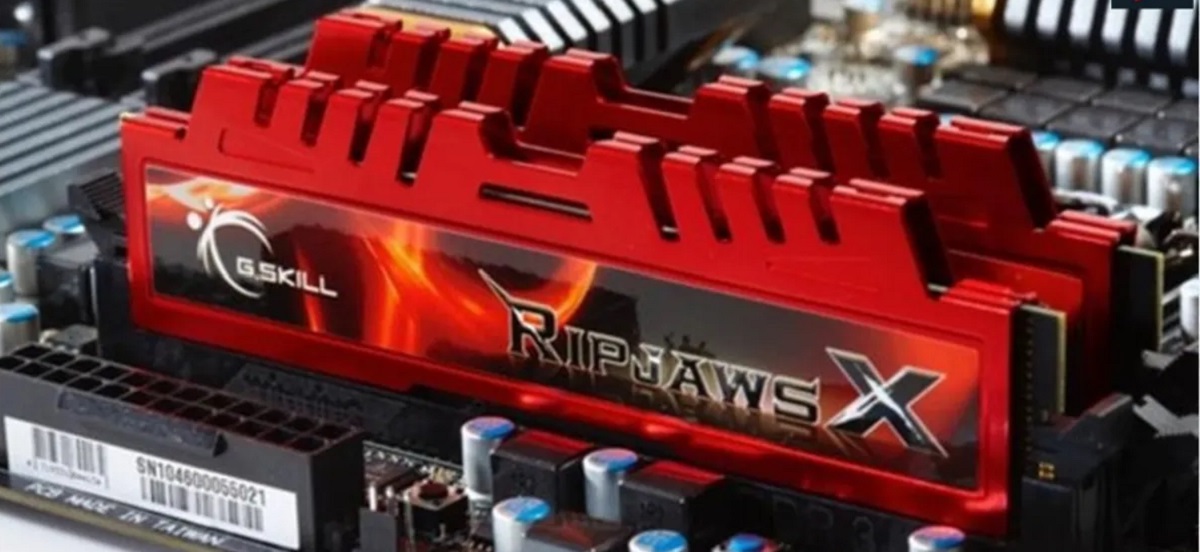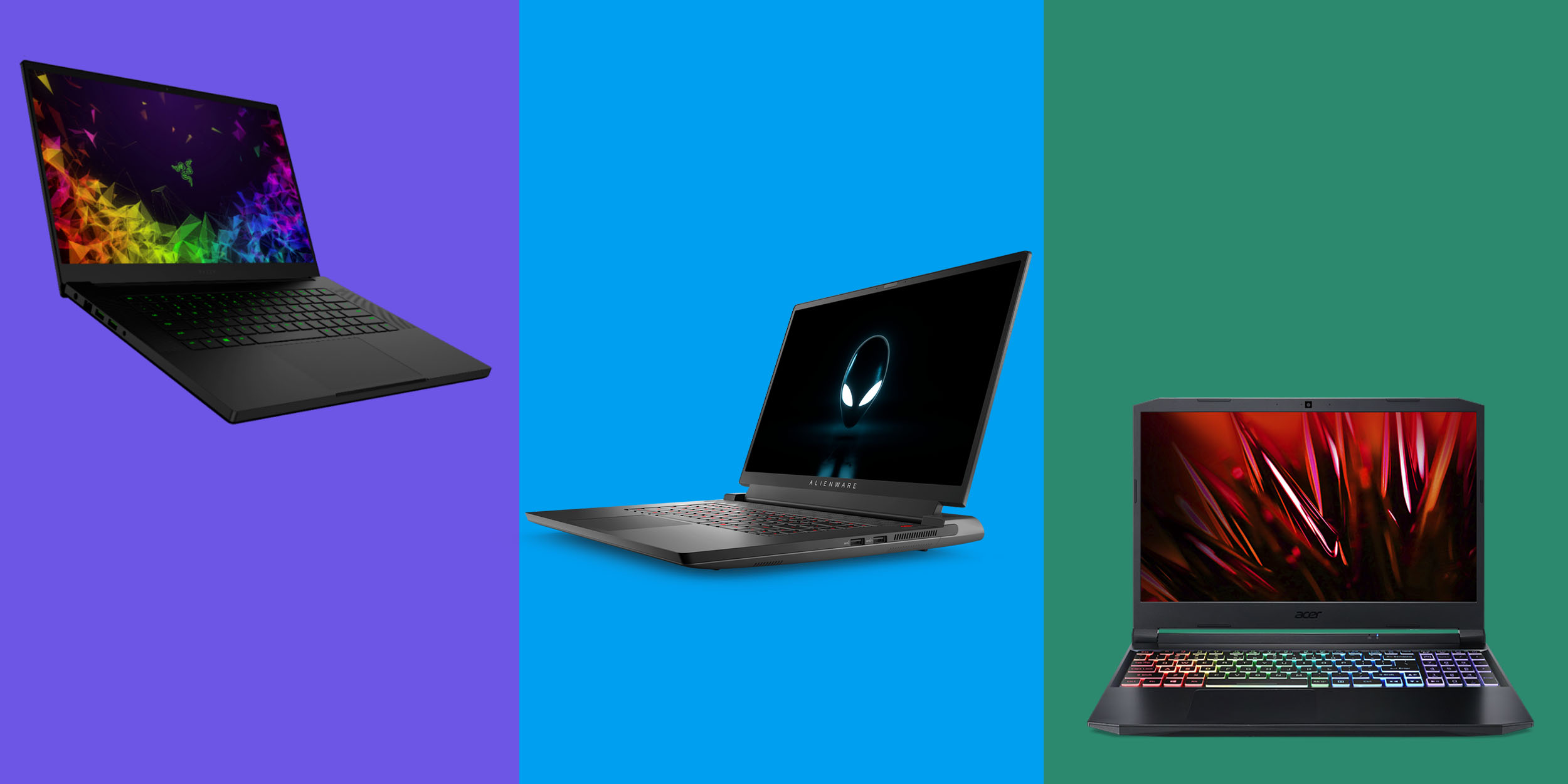Introduction
When it comes to programming, having the right amount of RAM is crucial for optimal performance and productivity. RAM, or Random Access Memory, is the temporary storage space where your computer stores data that is actively being used by running programs. As a programmer, you rely on your computer to handle complex coding tasks and run resource-intensive applications smoothly.
The amount of RAM you need as a programmer depends on various factors such as the programming languages and tools you use, the size and complexity of your projects, and your multitasking habits. Having insufficient RAM can lead to sluggish performance, lagging response times, and frequent system crashes, all of which can severely impact your productivity.
In this article, we will explore the RAM requirements for programmers and delve into various factors that you should consider when determining the ideal amount of RAM for your programming needs. We will also discuss the minimum and recommended RAM requirements, examine the impact of RAM on programming performance, and provide tips on how to optimize RAM usage.
Whether you are a professional programmer or just starting out, understanding the role of RAM in programming will help you make informed decisions when choosing or upgrading your computer’s memory.
RAM Requirements for Programming
When it comes to programming, the amount of RAM you need is determined by the type of programming tasks you perform and the specific requirements of the programming languages and tools you use.
Simple programming tasks, such as writing basic scripts or small-scale applications, typically have lower RAM requirements. In these cases, a minimum of 4GB to 8GB of RAM should be sufficient to handle the workload effectively.
However, if you work on more complex projects, use resource-intensive IDEs (Integrated Development Environments) or run virtual machines for testing and development, you will need a higher amount of RAM to ensure smooth performance. In such cases, a minimum of 16GB to 32GB of RAM is recommended.
Additionally, if you work with memory-intensive programming languages such as Java or C++, or if you frequently work with large datasets or compile code that requires substantial memory resources, you will benefit from having even more RAM. In these scenarios, a minimum of 32GB to 64GB or more may be necessary.
It’s important to note that the RAM requirements can vary based on the specific programming tasks you undertake and the software you use. For example, if you are working on graphics-intensive applications or machine learning projects, you may require a higher amount of RAM to handle the computational demands.
Moreover, multitasking plays a significant role in determining your RAM needs. If you tend to have multiple programming IDEs, web browsers, and other resource-intensive applications open simultaneously, you will need more RAM to accommodate the increased workload.
Ultimately, the goal is to provide enough RAM to support your programming tasks without experiencing performance bottlenecks or system slowdowns. By assessing the nature of your programming work and considering the specific requirements of your tools and languages, you can determine the appropriate amount of RAM needed for optimal performance.
Factors to Consider
When determining the RAM requirements for programming, there are several important factors to consider:
- Programming Languages and Tools: Different programming languages and tools have varying memory requirements. Some languages, like Python, are generally lightweight and have less demanding memory needs. On the other hand, languages like Java or C++ may require more RAM due to their memory-intensive nature.
- Project Size and Complexity: The size and complexity of your projects influence the amount of RAM you need. Working on larger projects with multiple files, libraries, and dependencies increases the demand for memory to effectively handle the codebase.
- IDEs and Development Environments: The choice of IDE or development environment can impact your RAM requirements. Resource-intensive IDEs with advanced features and built-in debugging tools may require more RAM to run smoothly.
- Data and Datasets: If your programming involves working with large datasets or processing heavy data loads, you will need more RAM to handle the memory requirements of these operations. This is especially true for tasks like data analysis, machine learning, and big data processing.
- Virtualization and Testing: If you frequently use virtual machines for testing or development purposes, you will need additional RAM to allocate memory resources to the virtual environment. Running multiple virtual machines simultaneously may require even more RAM.
- Multitasking Habits: Consider your multitasking habits and the number of applications you typically have running while programming. If you tend to have multiple applications, web browsers, or IDEs open simultaneously, you will need more RAM to handle the increased workload efficiently.
By carefully evaluating these factors and aligning them with your programming needs, you can determine an appropriate RAM configuration that ensures smooth performance and productivity.
Minimum RAM Requirements
When it comes to minimum RAM requirements for programming, it is essential to consider the basic needs for running programming software and completing smaller projects efficiently. While the exact minimum requirement can vary based on factors such as the programming language and tools being used, as a general guideline, a minimum of 4GB to 8GB of RAM is recommended.
This amount of RAM is typically sufficient for running lightweight IDEs or text editors and compiling smaller programs. It allows for smooth multitasking and ensures that your system can handle the basic memory needs of common programming tasks without significant slowdowns or performance issues.
However, keep in mind that the minimum RAM requirement mentioned is based on the assumption that you will not be working on large-scale projects or performing memory-intensive operations. If your programming work involves handling complex codebases, working with resource-intensive tools or IDEs, or running virtual machines for testing, you may need to consider higher RAM configurations.
Additionally, consider the future scalability of your programming needs. While meeting the minimum RAM requirements may be satisfactory for immediate tasks, the technology landscape is constantly evolving, and the demands of programming projects are likely to increase over time. Therefore, it is wise to opt for a higher RAM capacity if your budget allows, ensuring that you have enough headroom to accommodate more demanding programming requirements in the future.
Overall, while 4GB to 8GB of RAM is often considered the minimum requirement for efficient programming, for better performance and future-proofing, it is advisable to choose a RAM configuration that aligns with your specific programming needs.
Recommended RAM Requirements
When it comes to programming, having sufficient RAM is essential for optimal performance and productivity. While the minimum RAM requirements provide a baseline for basic programming tasks, the recommended RAM configuration ensures that you have ample memory to handle more complex projects and resource-intensive programming tools.
As a general guide, a recommended RAM configuration for programming falls in the range of 16GB to 32GB. This amount of RAM provides a significant upgrade from the minimum requirement and allows for smoother multitasking, faster code compilation, and improved overall system responsiveness. It also offers enough headroom to handle larger projects, memory-intensive programming languages, and resource-hungry IDEs.
Choosing a RAM configuration within this range is especially beneficial if you frequently work with multiple programming tools simultaneously, run virtual machines, or engage in data-intensive tasks such as machine learning or big data processing. These tasks can quickly consume a significant amount of memory, and having a higher RAM capacity ensures that your system can handle the workload without experiencing performance bottlenecks or slowdowns.
Moreover, the recommended RAM allocation considers the future scalability of your programming needs. As technology advances and programming becomes more sophisticated, the demands on your system are likely to increase. By opting for a higher RAM configuration, you are preparing your setup for the challenges that may arise as you tackle more complex projects or venture into new programming domains.
While 16GB to 32GB is the recommended range for most programmers, it’s worth noting that depending on your specific requirements and ambitions, you may benefit from even more RAM. For instance, if you work extensively with memory-intensive languages like Java or C++ or if you engage in heavy multitasking with demanding applications, considering 32GB or higher can be advantageous.
Ultimately, the recommended RAM requirements strike a balance between performance, future-proofing, and budget considerations. Investing in a sufficiently high RAM configuration ensures that your programming tasks run smoothly, allowing you to focus on your code and maximize your productivity.
RAM Requirements for Different Programming Tasks
Programming encompasses a wide range of tasks, and the RAM requirements can vary depending on the nature of the work. Understanding the specific RAM needs for different programming tasks can help you allocate the right amount of memory to ensure efficient performance. Here are some common programming tasks and their corresponding RAM requirements:
- Web Development: Web development typically involves working with web frameworks, HTML, CSS, and JavaScript. For basic web development tasks, a minimum of 8GB of RAM is usually sufficient. However, if you are working on larger web applications or utilizing memory-intensive frameworks and tools, it is recommended to have 16GB or more for smooth performance.
- Data Analysis and Machine Learning: Data analysis and machine learning tasks often involve handling large datasets and complex computations. RAM plays a crucial role in storing and manipulating data efficiently. For smaller data analysis projects, 16GB of RAM may be sufficient. However, if you are working with big datasets or running resource-intensive machine learning algorithms, it is recommended to have 32GB or more for optimal performance.
- Mobile App Development: Developing mobile applications involves using development platforms and simulators that require additional memory to emulate mobile devices. Depending on the platform you are targeting, a minimum of 8GB of RAM is recommended, but having 16GB or more can ensure smoother debugging and testing processes.
- Game Development: Game development often involves working with graphics-intensive engines and tools that require significant memory resources. To handle the demands of game development, a minimum of 16GB of RAM is advisable. For more complex game projects with high-resolution graphics and advanced physics simulations, having 32GB or more can provide a smoother workflow and better performance.
- Compiling and Building Projects: Compiling and building projects, especially large-scale ones, can require substantial memory resources. The more complex the project, the more RAM is needed to handle the compilation process efficiently. For compiling and building projects, a minimum of 16GB of RAM is recommended. However, having 32GB or more can significantly reduce build times and improve productivity.
These are just a few examples of programming tasks and their associated RAM requirements. It is important to consider the specific tools, frameworks, and languages you are utilizing, as well as the scale and complexity of your projects, when determining the optimal RAM configuration for each task.
Impact of RAM on Programming Performance
The amount of RAM in your computer has a significant impact on programming performance. Insufficient RAM can lead to various performance issues that can hinder your productivity and negatively affect your coding experience. Here are some ways in which RAM impacts programming performance:
- Speed and Responsiveness: Having an adequate amount of RAM ensures that your computer can store and access the data necessary for running programming tools and applications. Insufficient RAM can cause slower response times, sluggish program execution, and overall system slowdowns, resulting in reduced coding efficiency and frustration.
- Smooth Multitasking: As a programmer, you often have multiple applications running simultaneously, such as IDEs, browsers, and debugging tools. Sufficient RAM allows for smooth multitasking, allowing you to switch between applications seamlessly and work on multiple projects concurrently without experiencing performance bottlenecks or system freezes.
- Code Compilation and Execution: Compiling and executing code can be memory-intensive processes, especially for larger projects or resource-intensive languages. With adequate RAM, the compilation process is faster, reducing build times and increasing productivity. Insufficient RAM can lead to longer compilation times, hampering development speed and efficiency.
- Handling Large Datasets: For tasks involving data analysis, machine learning, or working with big datasets, having enough RAM is crucial. RAM allows for efficient storage and manipulation of data, enabling faster processing and analysis. Insufficient RAM can result in delays or crashes when working with large datasets, limiting your ability to effectively perform data-related programming tasks.
- Running Virtual Machines: Many programmers utilize virtual machines for testing or development purposes. Virtual machines require additional memory resources. Having enough RAM allows for smooth operation of virtual environments, enabling efficient testing and development. Insufficient RAM can lead to slower virtual machine performance and delays in running multiple virtual machines simultaneously.
In summary, RAM plays a vital role in programming performance. Having sufficient RAM ensures a speedy and responsive programming environment, smooth multitasking, faster code compilation and execution, efficient handling of large datasets, and seamless operation of virtual machines. By investing in an appropriate amount of RAM, you can unleash your programming potential and experience enhanced productivity and performance.
How to Optimize RAM Usage
Optimizing RAM usage is crucial for maximizing the performance of your programming environment and ensuring that you have enough memory resources to handle your tasks efficiently. Here are some strategies to optimize RAM usage:
- Close Unused Applications: Close any applications or processes that are not essential to your programming tasks. By freeing up memory occupied by unused programs, you can allocate more RAM to the applications you are actively working on.
- Limit Background Processes: Reduce the number of background processes running on your computer. Background processes consume memory resources and can impact the overall performance of your programming environment. Disable unnecessary startup programs and services to free up RAM.
- Optimize IDE and Editor Settings: Configure your IDE or text editor to use memory resources efficiently. Increase the memory allocation for your programming tools if possible. Check the documentation or preferences/settings of your specific IDE or editor for memory configuration options.
- Use Lightweight Alternatives: Consider using lightweight IDEs or text editors that have minimal memory requirements. This can help reduce the RAM usage compared to resource-intensive IDEs that have additional features and heavy memory footprints.
- Optimize Code and Data Structures: Efficient coding practices can help reduce the memory footprint of your code. Use appropriate data structures and algorithms that require less memory. Be mindful of memory usage when working with large datasets, avoiding unnecessary duplication or excessive memory allocation.
- Learn Memory Management Techniques: Familiarize yourself with effective memory management techniques in the programming language(s) you use. Understand concepts such as garbage collection, memory allocation, and deallocation to optimize memory usage in your code.
- Upgrade Your Hardware: If you consistently find yourself reaching the limits of your RAM despite optimization efforts, consider upgrading your hardware. Adding more RAM to your system can provide additional memory resources, allowing for smoother multitasking and handling of larger projects.
- Regularly Restart Your System: Restarting your computer regularly can free up memory that may be occupied by residual processes or memory leaks. Restarting your system helps ensure a fresh start and can improve overall RAM utilization.
By implementing these strategies, you can optimize RAM usage in your programming environment, leading to improved performance, smoother multitasking, and enhanced productivity. Remember that optimizing RAM usage is an ongoing process, and it’s important to reassess and adjust your optimization strategies as your programming needs evolve.
Additional Tips for Choosing RAM for Programming
When choosing RAM for programming, there are a few additional tips and factors to consider to ensure you make the right decision:
- Consider Future Upgrades: Anticipate your future programming needs and consider whether you might need to upgrade your RAM in the coming years. Choosing a RAM configuration that allows for easy expansion or upgrading can save you from the hassle and cost of replacing the entire RAM module.
- Check RAM Compatibility: Make sure to check the compatibility of the RAM modules with your computer system. Check the specifications of your motherboard and determine the type, speed, and maximum capacity of RAM it supports to ensure compatibility and avoid any potential compatibility issues.
- Research Ideal RAM Speed: Different processor architectures and motherboards have optimal RAM speed requirements. Research the ideal RAM speed that complements your system configuration to ensure optimal performance. Faster RAM speeds can provide improved performance, especially for memory-intensive programming tasks.
- Budget Considerations: While it’s important to invest in sufficient RAM for your programming needs, it’s also essential to consider your budget. Determine how much you are willing to spend on RAM and find a balance between performance and cost-effectiveness. Prioritize getting the right amount of RAM over other features that might not significantly impact programming performance.
- Read User Reviews: Before making a purchase, read user reviews and recommendations for different RAM models. Real-world experiences and feedback from other programmers can provide valuable insights into the performance, reliability, and compatibility of specific RAM modules.
- Consider Brand Reputation: Stick to reputable brands when choosing RAM modules. Established brands typically offer better-quality components and have good customer support. This ensures that you are purchasing reliable and high-quality RAM modules for your programming needs.
- Seek Expert Advice: If you are unsure about the RAM requirements for your specific programming needs or have any questions, consult with experts or seek advice from experienced programmers or computer technicians. They can provide valuable insights and help you make an informed decision.
By considering these additional tips, you can select the right RAM for your programming needs. Remember that the right RAM configuration can greatly enhance your programming experience, improve productivity, and ensure seamless performance for all your coding tasks.
Conclusion
Choosing the right amount of RAM is essential for optimal performance and productivity in programming. The RAM requirements for programming depend on various factors such as the programming tasks, languages, tools, and multitasking habits. While the minimum RAM requirements typically range from 4GB to 8GB for basic programming tasks, it is recommended to have 16GB to 32GB or even higher for more complex projects and resource-intensive programming tools.
Factors like project size, programming languages, IDEs, data processing, and virtualization all play a role in determining the RAM needs. It is important to evaluate these factors and align them with your specific programming requirements to ensure that your system can handle the workload efficiently.
Optimizing RAM usage through strategies like closing unused applications, limiting background processes, and optimizing code and data structures can help maximize your available memory resources. Additionally, considering factors like future upgrades, RAM compatibility, ideal RAM speed, budget, brand reputation, and seeking expert advice can further aid you in choosing the right RAM configuration.
By investing in the appropriate amount of RAM and employing optimization techniques, you can create a programming environment that is responsive, efficient, and capable of handling the demands of your programming tasks. This, in turn, will enable you to work more productively, smoothly multitask, and execute code faster.
Remember that choosing and optimizing RAM for programming is an ongoing process. As your programming needs evolve or as technology advancements emerge, it is important to reassess and adapt your RAM configuration to ensure continued optimal performance.







